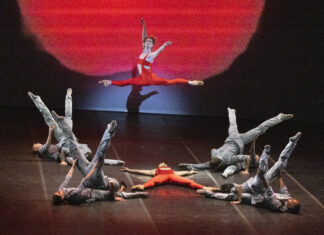In prima nazionale a Romaeuropa Festival 2024 The Making of Berlin della compagnia BERLIN, che riflette sulla storia contemporanea e i sensi di colpa che porta con sé, proponendo un ragionamento sul limite tra veridicità e finzione. Recensione.
English Version Below
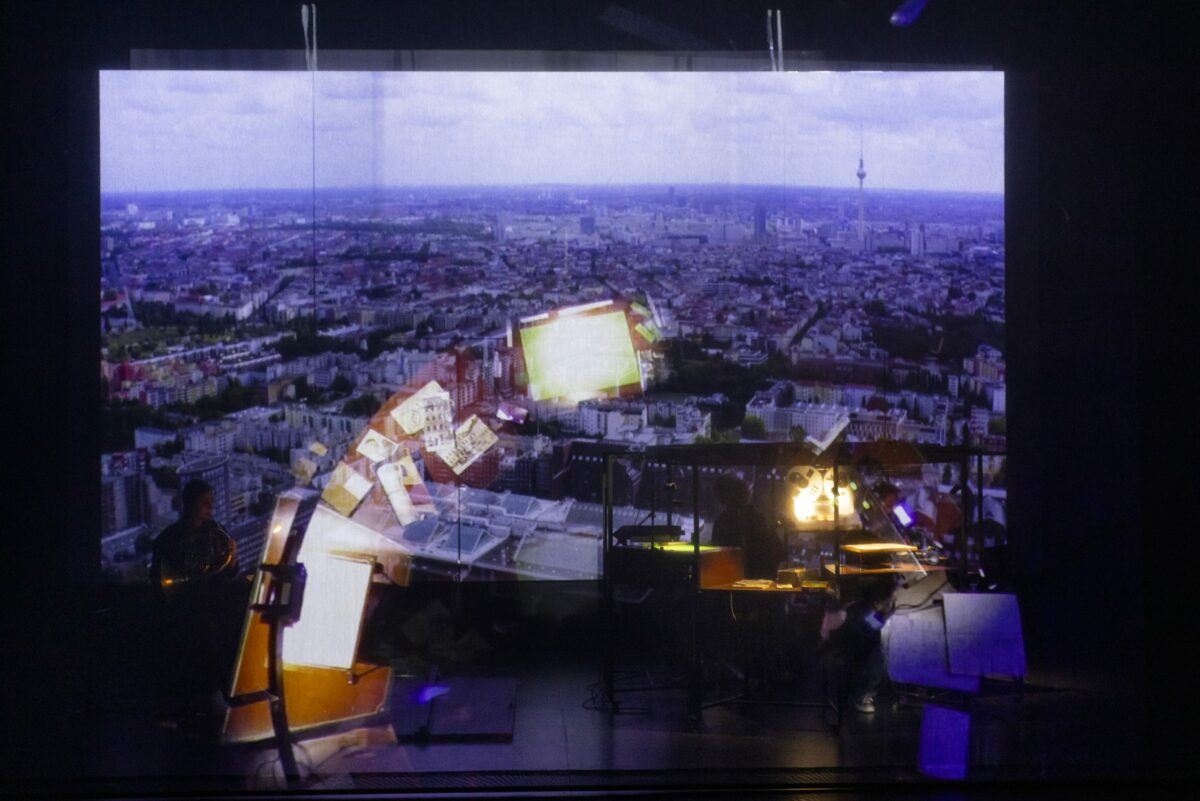
In Teoria generale del montaggio Sergej M. Ėjzenštejn definiva alcuni criteri fondamentali tra cui scegliere per scomporre e poi ricomporre il continuum delle immagini filmate in segmenti in grado, nel proprio giustapporsi, di creare effetti di coinvolgimento, spaesamento, epifania nel fruitore: il cosiddetto «montaggio delle attrazioni». Tra questi, il più complesso è quello della «associatività», vale a dire l’accostamento di immagini, suoni o azioni che, pur non essendo direttamente collegati, si completano attraverso un’associazione logica o emotiva. Perché si verifichi questo effetto, allora, è necessario l’ingresso in campo di un ragionamento da parte di chi guarda, di una presa in carico di responsabilità che arrivi a completare un ragionamento che resta, programmaticamente, suggerito.
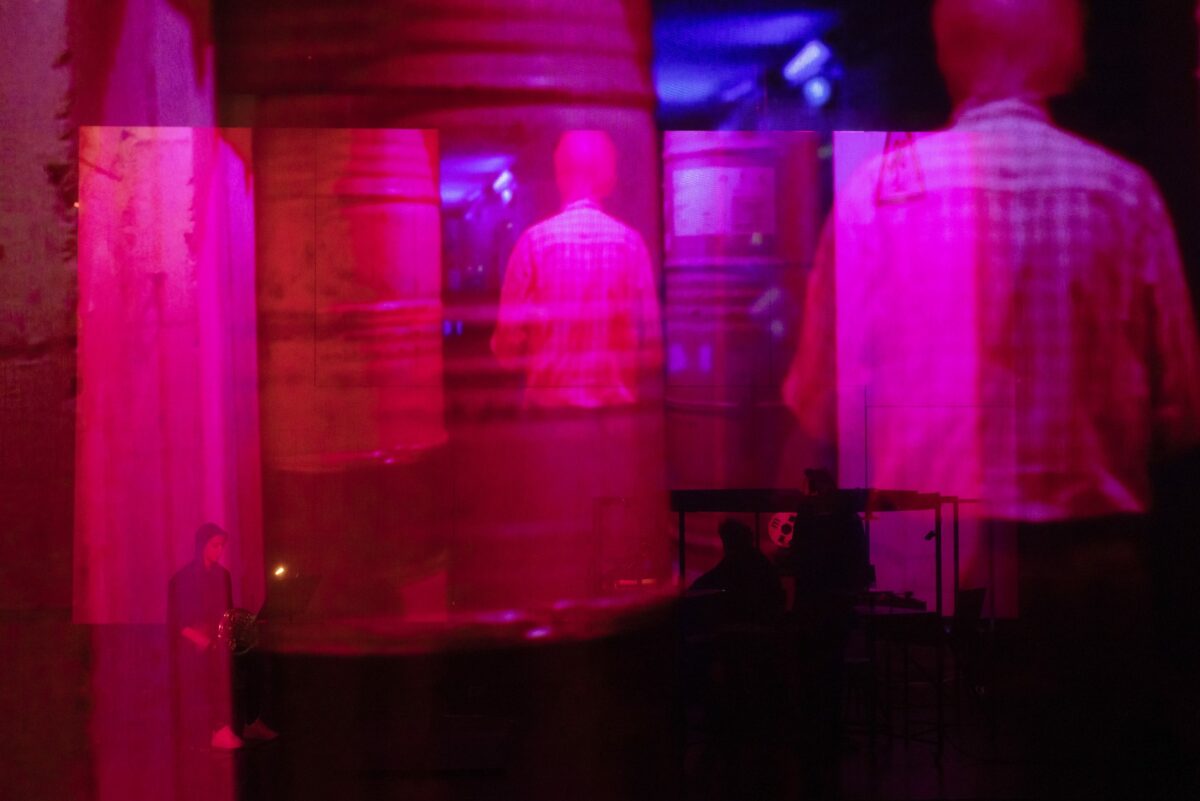
Qualcosa di simile a un’assunzione di responsabilità è la richiesta sommessa che sembra serpeggiare, in maniera via via più nitida, sotto alla tessitura drammaturgica di The Making of Berlin, giunto in prima nazionale a La Pelanda per il 39esimo Romaeuropa Festival. Berlin non è solo la città, ma anche il nome del collettivo belga fondato nel 2003 da Yves Degryse, Bart Baele e Caroline Rochlitz: una ricerca artistica posizionata al confine tra cinema documentario e creazione teatrale e radicalmente ancorata al trattamento del fatto contemporaneo, sul quale viene puntata una lente spietata, in grado di farne emergere le contraddizioni.
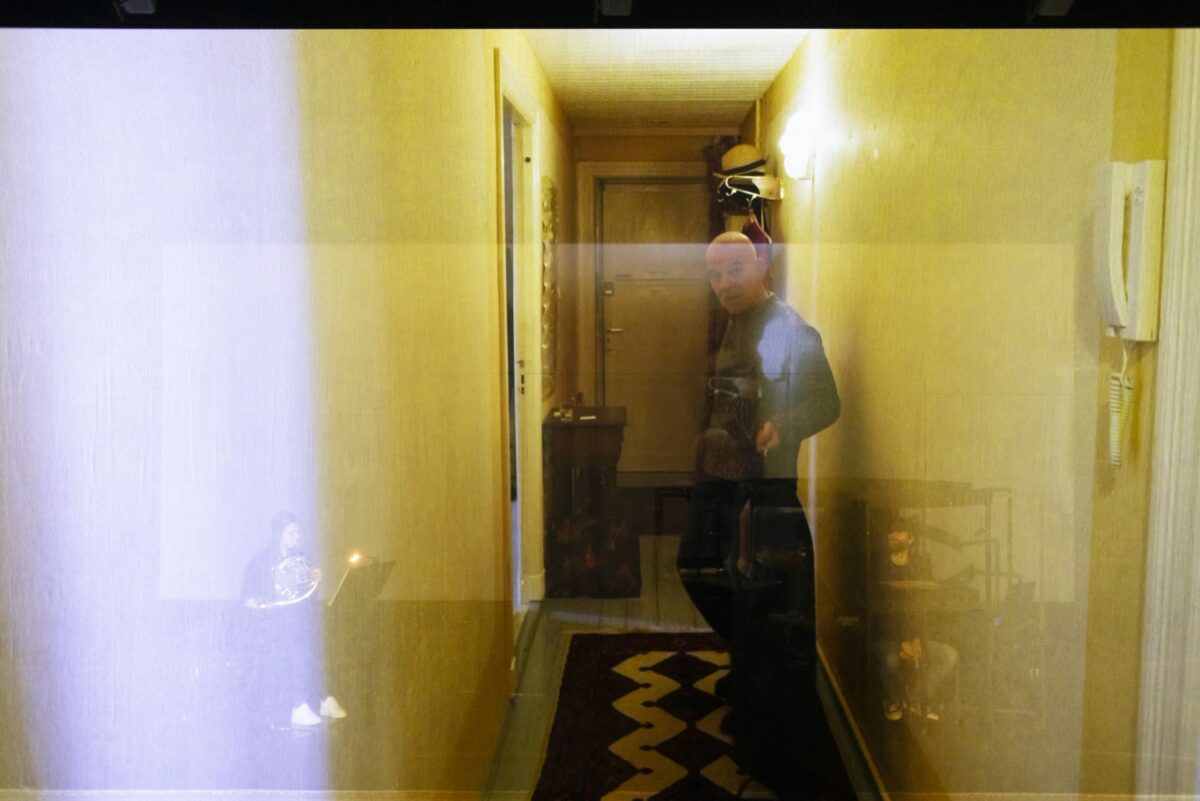
L’arcoscenico sigillato da uno schermo per videoproiezioni, assistiamo a quel che pare essere un documentario: in un ottimo montaggio guardiamo il making of dell’ultimo capito della serie Holocene, un sorvolare tra città come Gerusalemme, Iqaluit, Bonanza, Mosca, a metà tra storia e immaginario, in grado di svelarne l’identità radicata nelle storie individuali. Il capolinea è, appunto, Berlino, e Yves Degryse accetta, proprio malgrado, di accogliere una telecamera che riprenderà il loro ultimo progetto sulle benjaminiane «immagini di città». Il gruppo ha individuato la vicenda che farà da epifania: un anzianissimo ex direttore di scena della Berliner Philarmoniker Orchestra desidera narrare l’evento speciale accaduto alla soglia dell’assedio del Terzo Reich, la Götterdämmerung di Wagner eseguita dall’organico di stato ripartito negli angusti angoli di una rete di bunker sotterranei, per sfuggire ai bombardamenti russi. Friedrich Mohr è un vecchio tedesco tale e quale alle decine che si potrebbero incontrare in sosta alle panchine del Tiergarten: barba bianca orgogliosamente guadagnata e mai tolta, cardigan e camicia su pantaloni di stoffa pesante, andatura incerta ma misurata, lineamenti che custodiscono la massima tristezza di chi, pur essendo sopravvissuto, non riesce a percepire di aver fatto la differenza. E che, forse, desidera un riscatto.
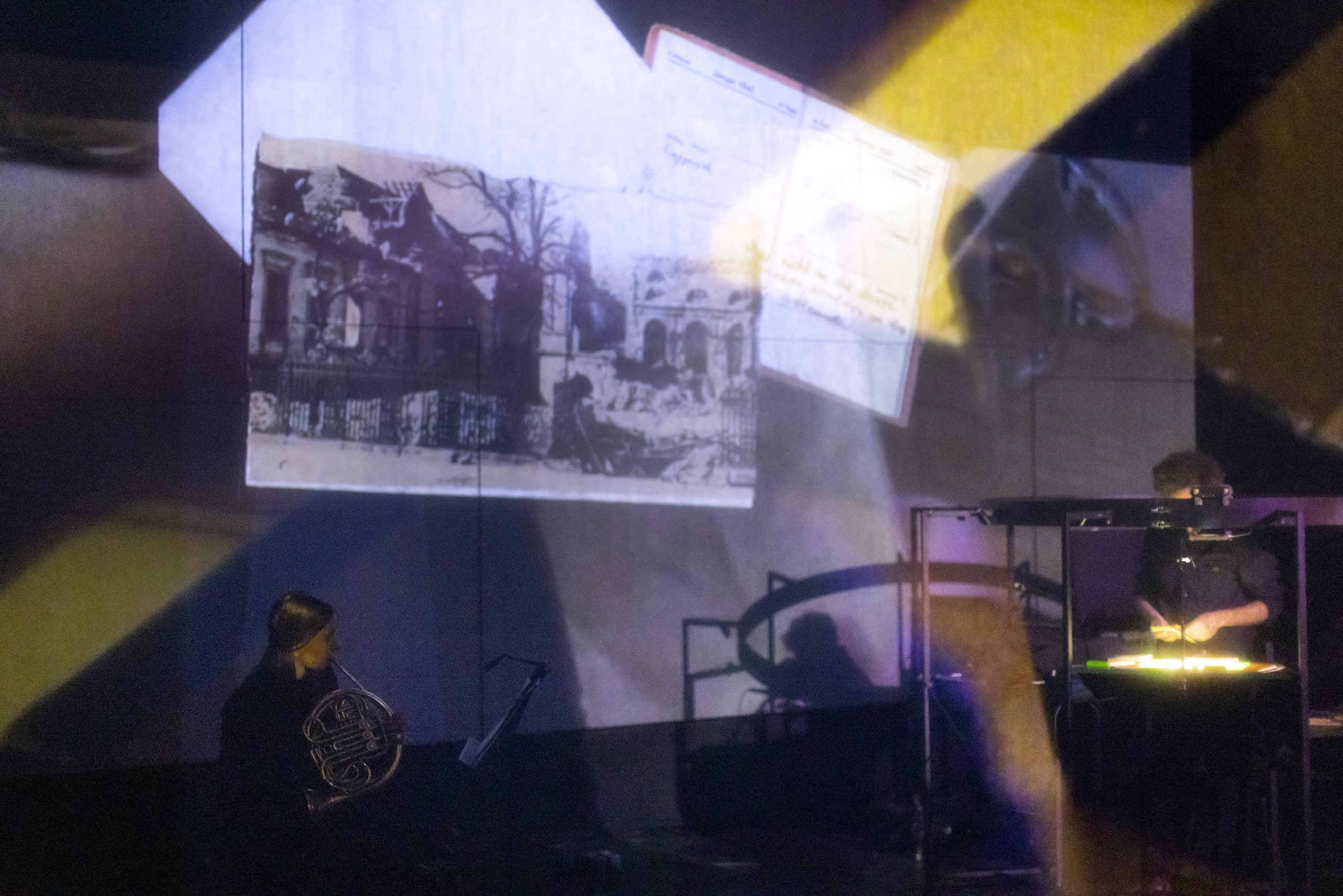
Sullo schermo seguiamo le complesse architetture produttive di una compagnia di successo del nord Europa (attualmente Degryse, con Raes e con Melih Gençboyacı, sono direttori artistici del celebre NTGent) alle prese con un progetto complesso che conserva in sé il germe dell’operazione politica: la microstoria degli individui incontra il senso di colpa dei governi e delle masse, volgendo in vena poetica l’urlo colpevole della Germania nazista e dei suoi, pur silenziati, oppositori. In programma c’è il re-enactment del concerto dai bunker, alle prese con il rifiuto della stessa orchestra berlinese e con la ricerca del collettivo disposto a farsi pubblicità positiva e, insieme, determinato a non perdere la faccia. Il ritmo letargico del parlato di Mohr, la ripetizione di certe sequenze già ascoltate e viste, l’indugiare su musiche d’effetto e tempi dilatati sta per lasciare spazio alla noia o all’impressione che BERLIN ci stia consegnando una calligrafica lezione etica, quando lo schermo magicamente si alza e ci rivela, in presenza viva, alcuni protagonisti del video con cui ormai avevamo imparato a familiarizzare, noi tranquilli sulle nostre poltrone. No, invece, c’è di più. C’è il movimento in carne ed ossa di chi ha attraversato il processo, protetto da un complicato intreccio di schermi, consolle e tagli di luce, un fondale che si scomporrà con grazia in sette schermi, uno per ciascun bunker, una violoncellista che mostra l’arco in movimento e il lavorio dei corpi a prendersi cura della nostra visione. Si tratta di una visione frammentata, una drammaturgia multimediale accuratamente montata sul procedere del documentario che, adesso, ha attraversato una profonda svolta drammaturgica: la messa in crisi totale del dato di realtà della vicenda che avrebbe dovuto giustificare l’intervento sul documento.
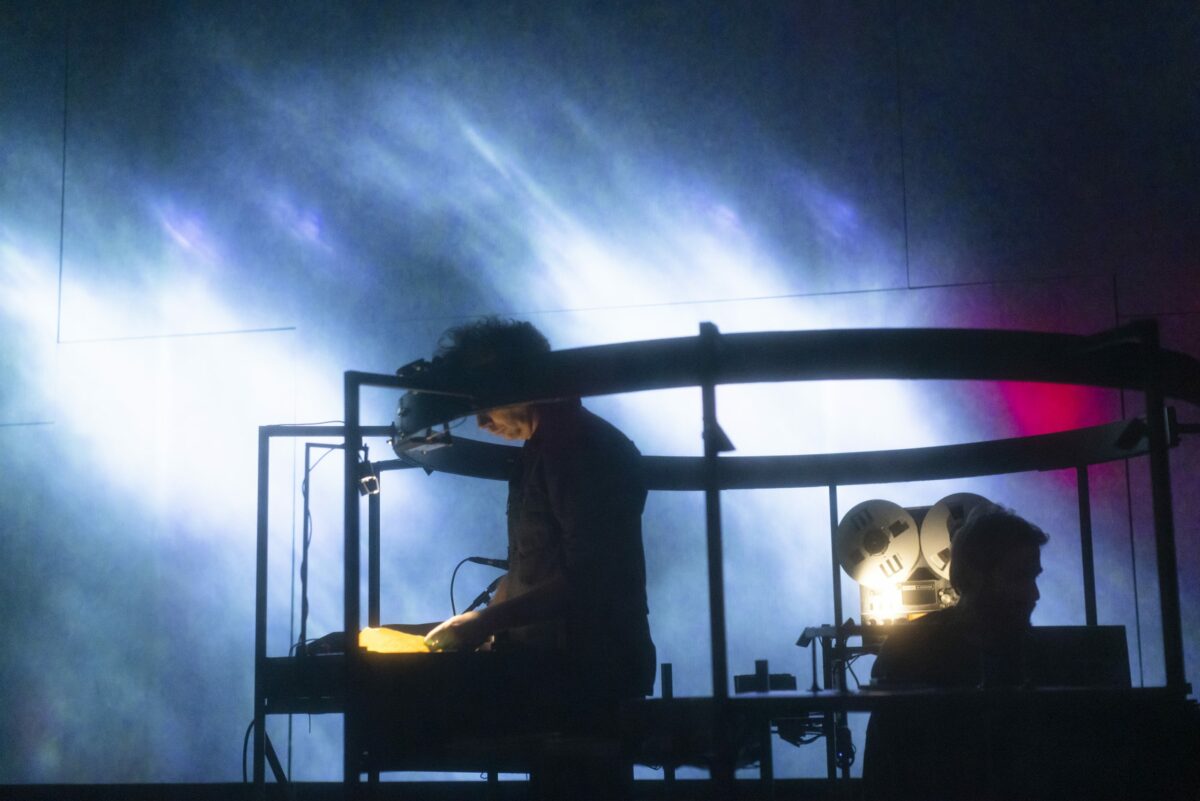
Quando il teatro, regno della rappresentazione, si occupa della realtà, il discorso si sposta su chi osserva. Ed è qui che il pubblico può sentire la responsabilità totale della presa di parola. La vicenda che abbiamo fruito come semplici spettatori e spettatrici viene trascinata alla sbarra in un processo alla veridicità: tutto ciò che è stato raccontato potrebbe di fatto essere la fantasia di un vecchio alle prese con la propria mania di protagonismo; o, per sineddoche, quella di un popolo che ancora, dopo ottant’anni, ha bisogno di emancipare la propria coscienza dalle catene di una condanna morale che non avrebbe fine. La Berliner Philarmoniker dichiara di appoggiare solo progetti «di finzione», i due reduci di quell’esperienza ci regalano un’emblematica conversazione sull’esigenza di «alzarsi» e sulla potente, invece, gravità che ci fa restare «seduti» di fronte alle ingiustizie del mondo che osserviamo. Un attimo prima che il sipario filmico si alzasse rivelando altro, facendo eco alla deriva di una missione documentaria che vuole credere prima ancora che verificare, avevamo infatti pensato che il protagonista della storia apparisse troppo giovane per esser stato presente ai bombardamenti del 1945. Ma ora non c’è modo (o necessità) di capire se quel volto di vecchio appassito di tristezza sia quello di un testimone oculare, di un custode di memorie, oppure quello di un attore scritturato apposta per interpretare quel difficile (oppure facilissimo!) ruolo.
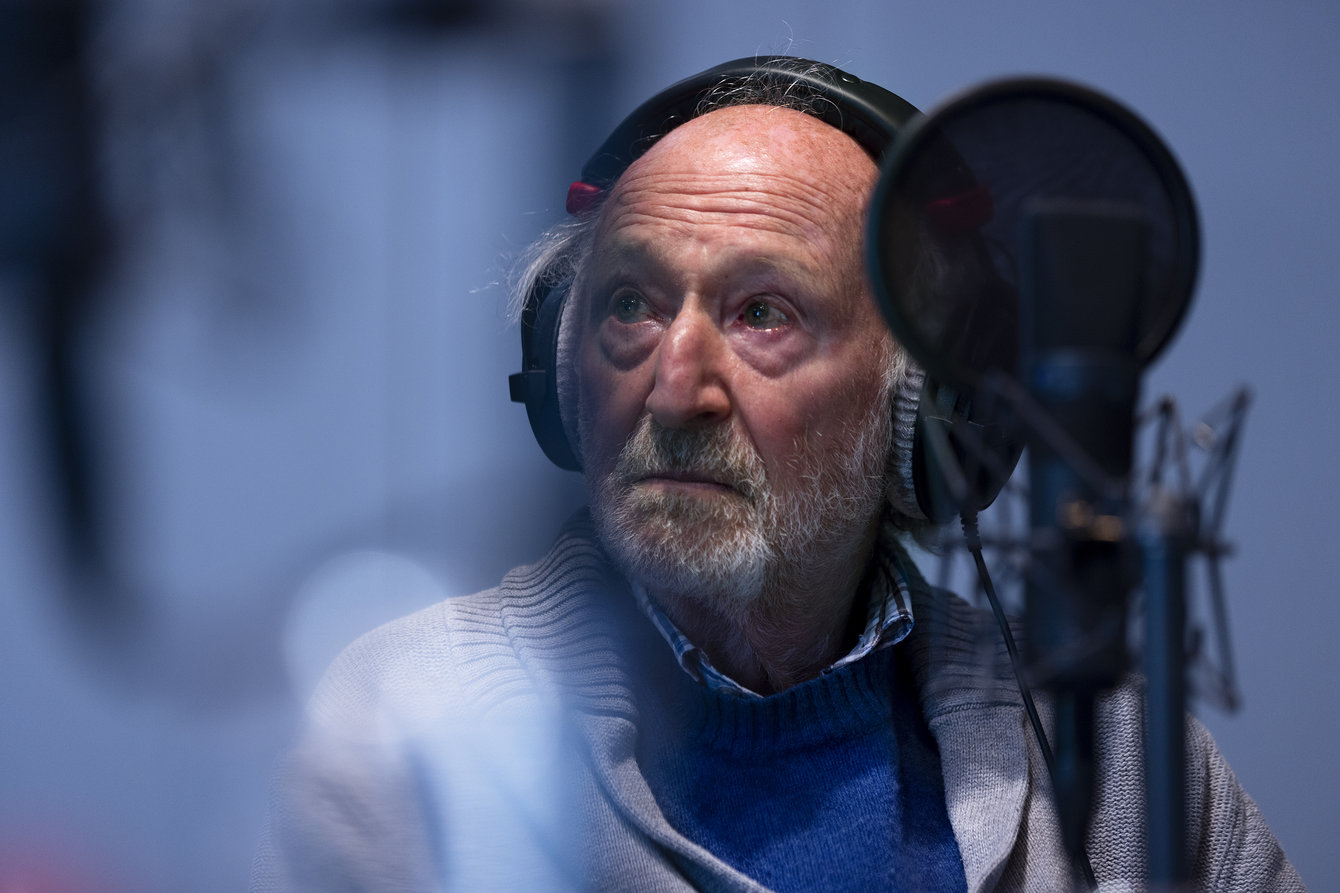
Nel racconto che continuiamo a seguire, il collettivo BERLIN, affogato nel dubbio che la storia sia solo una splendida menzogna, resterà comunque ancorato al progetto (perché si dice, le penali di produzione sono insostenibili), piuttosto lo modificherà: non sarà più quello di costruire un ultimo spettacolo sulla memoria sopita di una città che gli dà il nome, né la vicenda privata di un testimone; diventerà un affresco tra vero-verosimile-desiderato-falso, affondo crudele sulla nostra capacità di distinguere, sepolte dalla polvere della Storia e del nostro stesso senso di colpa di occidentali, la traccia che separa una commovente realtà da una sua ben più prosaica rappresentazione.
Se raccontiamo del passato una versione forzata, se nelle tracce della memoria individuiamo delle trappole di attendibilità, come dobbiamo comportarci? Come possiamo renderci – al contempo – garanti e giudici di una vicenda orribile come la follia nazista e – al contempo – dello strenuo sforzo di chi c’era di confermarsene estraneo? Ci serve un impegno di responsabilità che riesca a farsi partecipe del processo di costruzione narrativa. Questo, in definitiva, è ciò che BERLIN ci chiede. In questa fabula divorata dall’intreccio, detta alla maniera di Propp, in cui la disposizione degli eventi ha la meglio sulla loro possibilità d’essere ricostruiti, aprendo lo sguardo alla compartecipazione etica possiamo essere testimoni di un vulnus che ci rende tutti colpevoli: riconosciamo reale e attendibile ciò che ci viene raccontato nella maniera più convincente. E tutto «il resto – dice il Poeta – è silenzio».
In un libro del 2009 intitolato L’angelo rovesciato. Quattro saggi sull’11 settembre e la scomparsa della realtà, Attilio Scarpellini descrive quel «momento in cui il soggetto e l’oggetto della visione si scambiano di posto e ciò che è guardato esce dalla sua passività per guardarci a sua volta, come nell’aura benjaminiana che può essere avvertita nell’istante in cui anche le cose si dotano di una capacità di guardare». Ecco. BERLIN fa in modo che ciò che è guardato ci guardi, a propria volta. E noi ne siamo usciti stregati, catturati da una presenza dell’oggetto-documento che nella composizione logica ed emotiva, tra film e azione scenica, fa trasalire la nostra assenza al momento del giudizio, asfalta il nostro tempo rassicurante, la nostra storia, così lontana prima e, ora, così vicina.
Sergio Lo Gatto
La Pelanda, Roma, Settembre 2024 per Romaeuropa Festival
THE MAIKNG OF BERLIN
regia: Yves Degryse
Performer in scena: Yves Degryse, Fien Leysen, Sam Loncke (alternato), Geert De Vleesschauwer, Bregt Janssens, Koen Goossens, Marjolein Demey (alternato) Rozanne Descheemaeker, Matea Majic, Diechje Minne, Jonathan Van der Beek (alternato)
In video: Friedrich Mohr, Martin Wuttke, Stefan Lennert, Werner Buchholz, Alisa Tomina, Krijn Thijs, Chantal Pattyn, Symfonisch Orchestra Opera Ballet Vlaanderen, Alejo Pérez, Caroline Große, Michael Becker, Claire Hoofwijk, Alejandro Urrutia, Marek Burák, Marvyn Pettina, Farnaz Emamverdi, Il team di BERLIN: Jane Seynaeve, Eveline Martens, Yves Degryse, Jessica Ridderhof, Geert De Vleesschauwer, Sam Loncke, Manu Siebens, Kurt Lannoye, Il team dell’ Opera Ballet Vlaanderen: Jan Vandenhouwe, Lise Thomas, Eva Knapen, Christophe De Tremerie
Video ed editing video: Geert De Vleesschauwer, Fien Leysen, Yves Degryse
Montaggio Video: Maria Feenstra
Riprese con drone: Yorick Leusink e Solon Lutz
Riprese Backstage: Fien Leysen
Scenografia: Manu Siebens
Costruzione della scena: Manu Siebens, Ina Peeters, Rex Tee, Joris Festjens
Costruzione e progettazione del set cinematografico: Jessica Ridderhof, Klaartje Vermeulen, Ruth Lodder, Ina Peeters
Composizione musicale e missaggio: Peter Van Laerhoven
Musica live: Rozanne Descheemaeker, Diechje Minne, Matea Majic, Jonathan Van der Beek
Musica nel film: Peter Van Laerhoven, Tim Coenen, Symfonisch Orchestra Opera Ballet Vlaanderen diretta da Alejo Pérez
Missaggio orchestra: Maarten Buyl
Design dei suoni dal vivo e missaggio: Arnold Bastiaanse
Registrazioni suono: Bas De Caluwé, Maarten Moesen, Bart Vandebril
Traduzione e sottotitolaggio: Dorien Beckers, Maria Feenstra, Annika Serong, Nadine Malfait, Isabelle Grynberg
Coordinamento tecnico: Manu Siebens, Geert De Vleesschauwer, Marjolein Demey
Tecnici:: Bregt Janssens, Jurgen Fonteijn, Hans De Prins, Koen Goossens
Direzione di Produzione: Jessica Ridderhof
Assistenza tedesca alla produzione: Daniela Schwabe, Gordon Schirmer
Ricerca su Wagner: Clem Robyns
Aiuto alla ricerca: Annika Serong
Fotografia: Koen Broos, Gordon Schirmer
Business management: Tine Verhaert
Business management [fino al 2021]: Kurt Lannoye
Coordinamento e produzione giornaliera: Jane Seynaeve, Maya Van der Brempt
Distribuzione: Eveline Martens, David Bauwens
Comunicazione: Sam Loncke
Coproduzione: DE SINGEL [Antwerp, BE], le CENTQUATRE-PARIS [FR], Opera Ballet Vlaanderen [BE], VIERNULVIER [Ghent, BE], C-TAKT [Limburg, BE], Theaterfestival Boulevard [Den Bosch, NL], Berliner Festspiele [DE]
Con il supporto di: the Flemish Government, Sabam for Culture, Tax Shelter of the Belgian federal government via Flanders Tax Shelter
BERLIN è artista associato a DE SINGEL [Antwerp, BE] e artista associato al CENTQUATRE-PARIS [FR]
THE MAKING OF BERLIN. THE DISAPPEARANCE OF REALITY
by Sergio Lo Gatto
In his theory of montage, Sergei Eisenstein defined some fundamental criteria to be used in breaking down and then reassembling the continuum of filmed images into segments capable, through their juxtaposition, of creating effects of engagement, disorientation, and epiphany for the viewer: the so-called “montage of attractions”. Among these, the most complex is “associativity”, which refers to the juxtaposition of images, sounds, or actions that, despite not being directly connected, complement each other through a logical or emotional association. For this effect to occur, then, the viewer must engage in a reasoning process, taking on the responsibility of completing a thought that remains, by design, merely suggested.
Something akin to an assumption of responsibility is the muted request that seems to increasingly permeate, with growing clarity, the dramatic structure of The Making of Berlin, which premiered at La Pelanda as part of the 39th Romaeuropa Festival. Berlin is not just the city, but also the name of the Belgian collective founded in 2003 by Yves Degryse, Bart Baele, and Caroline Rochlitz: an artistic research project positioned on the boundary between documentary cinema and theatrical creation, and deeply rooted in its approach to contemporary issues, on which it casts a merciless lens, revealing their contradictions.
The stage is sealed off by a screen for video projections, and we watch what appears to be a documentary: through skilful editing, we observe the making of the latest episode of the Holocene series, a journey through cities such as Jerusalem, Iqaluit, Bonanza, and Moscow, somewhere between history and imagination, able to uncover identities rooted in individual stories. The final destination is, indeed, Berlin, and Yves Degryse reluctantly agrees to have a camera capture their latest project on the Benjaminian “city images”. The group has identified the event that will serve as an epiphany: a very elderly former stage manager of the Berliner Philharmoniker Orchestra wishes to recount the special event that took place on the brink of the Third Reich’s siege—the Götterdämmerung by Wagner, performed by the state orchestra, which had been scattered into the cramped corners of a network of underground bunkers to escape Russian bombings. Friedrich Mohr is an old German man, much like dozens you might see resting on the benches in the Tiergarten: a proudly grown and never-shaven white beard, cardigan and shirt over heavy fabric trousers, an unsteady but measured gait, features that hold the profound sadness of someone who, despite surviving, cannot perceive that they made a difference. And who, perhaps, desires redemption.
On screen, we follow the complex production architecture of a successful Northern European company (currently Degryse, with Raes and Melih Gençboyacı, are the artistic directors of the renowned NTGent) tackling a complex project that bears the seed of a political operation: the microhistory of individuals meets the guilt of governments and masses, turning the guilty cry of Nazi Germany and its, though silenced, dissenters into poetic expression. The programme includes a re-enactment of the bunker concert, faced with the rejection of the Berlin orchestra itself and the search for a collective willing to make positive publicity while being determined not to lose face. Mohr’s lethargic speech rhythm, the repetition of certain sequences already seen and heard, the lingering on evocative music and elongated timings are about to give way to boredom or the impression that BERLIN is delivering us a neatly penned ethical lesson, when the screen magically rises and reveals, live, some of the protagonists of the video with whom we had already become familiar, as we sat comfortably in our seats. But no, there is more. There is the flesh-and-blood movement of those who have gone through the process, protected by a complex weave of screens, consoles, and light cuts, a backdrop that gracefully disassembles into seven screens, one for each bunker, a cellist showing the moving bow, and the labour of bodies taking care of our vision. It is a fragmented vision, a multimedia dramaturgy carefully assembled in line with the documentary’s progression, which has now undergone a profound dramaturgical shift: the total crisis of the reality of the story that should have justified the intervention on the document.
When theatre, the realm of representation, addresses reality, the discourse shifts to the observer. And it is here that the audience can feel the full responsibility of taking a stance. The story that we have consumed as mere spectators is dragged into the dock for a trial on its truthfulness: everything that has been told could, in fact, be the fantasy of an old man struggling with his own craving for protagonism; or, by synecdoche, that of a people who, even after eighty years, still need to free their conscience from the chains of a moral condemnation with no end. The Berliner Philharmoniker declares its support only for “fictional” projects, and the two survivors of that experience offer us a symbolic conversation about the need to “stand up” and the powerful gravity that instead keeps us “seated” in the face of the injustices of the world we observe. A moment before the cinematic curtain rose, revealing something else and echoing the drift of a documentary mission that wants to believe before even verifying, we had indeed thought that the protagonist of the story appeared too young to have been present during the 1945 bombings. But now there is no way (or need) to discern whether that old, sorrow-laden face belongs to an eyewitness, a keeper of memories, or an actor hired specifically to play that challenging (or perhaps all too easy) role.
In the story we continue to follow, the BERLIN collective, drowned in the doubt that the story is merely a splendid lie, will remain anchored to the project (for, it is said, the production penalties are unsustainable), but will modify it: it will no longer be about creating a final performance on the dormant memory of a city that bears its name, nor the private story of a witness; it will become a fresco blending real, plausible, desired, and false, a ruthless dive into our ability to distinguish, buried under the dust of History and our own Western sense of guilt, the line that separates a moving reality from its far more prosaic representation.
If we recount a forced version of the past, if in the traces of memory we identify traps of credibility, how should we behave? How can we be both guarantors and judges of a dreadful event such as the Nazi madness and, at the same time, of the tireless effort of those present to prove their detachment from it? We need a commitment to responsibility that can partake in the narrative construction process. This, ultimately, is what BERLIN demands of us. In this fabula devoured by the plot, as Propp would put it, where the arrangement of events prevails over their potential to be reconstructed, by opening our gaze to ethical participation, we can bear witness to a wound that makes us all guilty: we acknowledge as real and credible what is told to us in the most convincing manner. And all the “rest – as the Poet says – is silence”.
In a 2009 book titled The Inverted Angel. Four Essays on 9/11 and the Disappearance of Reality, Attilio Scarpellini describes that “moment when the subject and object of vision swap places and what is being watched ceases its passivity to look back at us, as in the Benjaminian aura that can be felt in the instant when even things acquire the ability to see.” That’s it. BERLIN ensures that what is watched looks back at us in turn. And we have left, enchanted, captured by a presence of the object-document which, in its logical and emotional composition, between film and scenic action, startles our absence at the moment of judgement, paving over our reassuring time, our history, once so distant and now so close.





